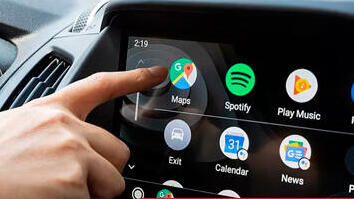Google is gearing up to introduce a series of changes to its Android Auto software, as revealed during its annual developer conference. It's hard to imagine a scenario now where a new car is sold without its multimedia system supporting both Android Auto and iOS, that is, Apple CarPlay.
The ability to seamlessly connect your phone to your car, essentially turning your vehicle into an extension of your mobile device, is becoming a necessity for most consumers given the ubiquitous presence of cellular devices in our lives, both in and out of the car.
Major car manufacturers realized that without successful and full integration with cellular phones, consumers might opt out of certain car models, sacrificing complete control over the car's multimedia systems and allowing access to external elements.
According to information presented by Google, around 200 million vehicles worldwide currently support Android Auto. Approximately 40 models marketed worldwide not only support Android Auto but also come equipped with a Google-based interface, meaning their operating system is managed by Google (in Israel, for example, this includes Ford and Volvo cars).
The list of changes and upgrades to be added for all Android Auto users includes support for gaming, video streaming, and internet browsing. The choice of these specific services isn't surprising: the functions developed for users aren't ones you can use while driving but rather during extended stops, such as while the car is charging. Generally, the concept of utilizing free time during the charging of electric cars is on the agenda for many car manufacturers, and Google already has partnerships with Volvo allowing users to watch Amazon Prime while their car charges. Expanding Google's services essentially allows customers to sit in their car while it's charging and focus on the large car screen instead of their phone screen.
Opening up these functions to the large car screen isn't just due to Google's goodwill but also represents a lucrative revenue stream. Cars today are becoming increasingly connected, and behind the scenes, there's a silent battle between car manufacturers and cellular giants: who will be the conduit through which car owners will pay to occupy their free time while their car charges? Whether it's content providers like YouTube or delivery companies like food chains that can swiftly deliver pizza to customers spending an hour charging their vehicle, at least for now, Google is leading the race.


